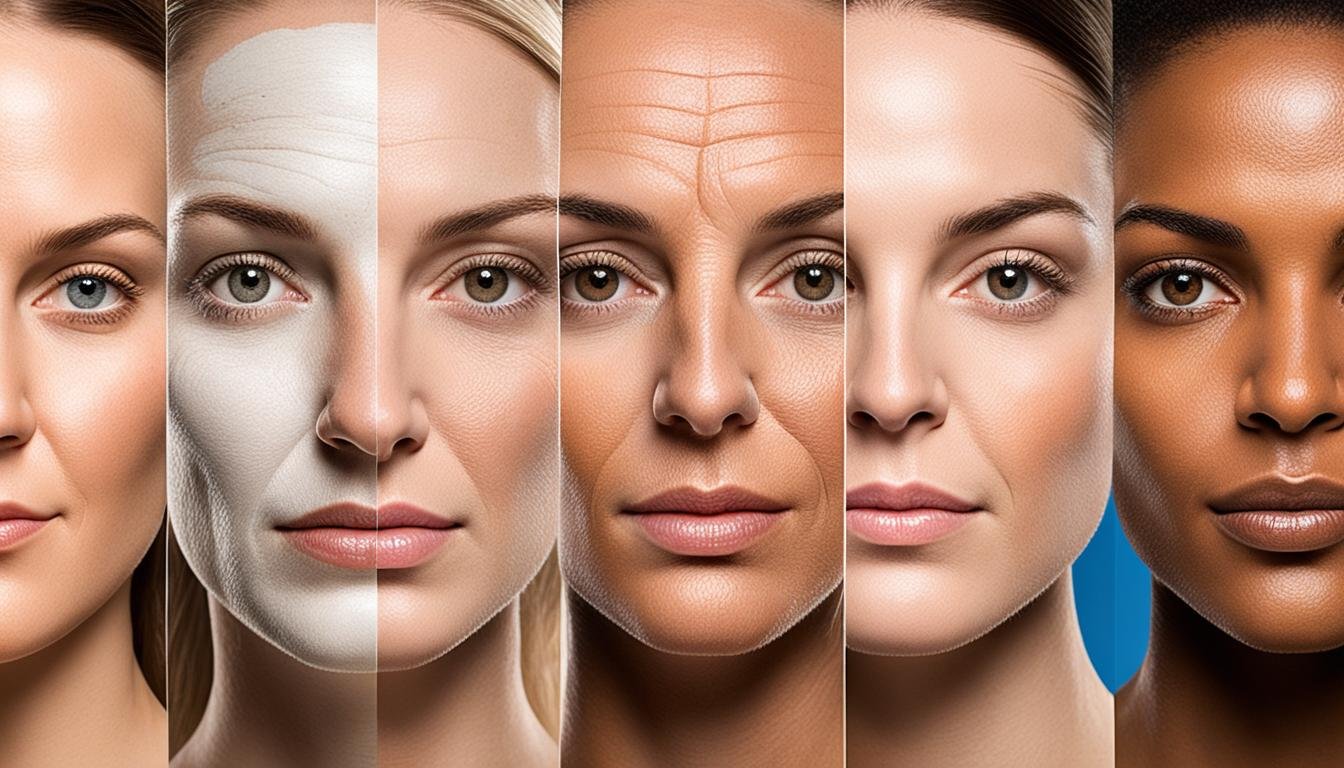Why did white skin evolve?
Have you ever wondered why different human populations have varying skin colors? What drives the evolution of white skin? Join us as we delve into the fascinating world of skin pigmentation and human adaptation, exploring the reasons behind the evolution of white skin.
Throughout history, skin color has been a subject of curiosity and debate. From the darkest hues to the lightest shades, human skin exhibits a beautiful spectrum of colors. But what factors have shaped this diversity? And why did white skin evolve in certain populations while others retained darker pigmentation?
In this article, we will uncover the evolutionary process that led to the development of white skin in humans. We will explore the genetic basis of skin pigmentation and how genes like MC1R and SLC24A5 influence skin color. Additionally, we will examine geographical factors such as latitude and UV radiation levels that have played a crucial role in the distribution of light and dark-skinned populations worldwide.
Join us on this journey as we unravel the mysteries of human adaptation, shed light on the fascinating evolution of white skin, and gain a deeper understanding of the complex interplay between genetics and environmental factors.
Key Takeaways:
- The evolution of white skin in humans is primarily driven by the need for increased vitamin D synthesis and protection against folate depletion and DNA damage.
- Genes such as MC1R and SLC24A5 play a significant role in determining skin color, with different populations exhibiting unique combinations of genetic variants.
- The geographical distribution of light and dark-skinned populations is highly correlated with UV radiation levels, with light skin being advantageous in environments with low sunlight intensity.
- The evolution of white skin is a fascinating example of human adaptation and survival mechanisms in response to diverse environmental conditions.
The genetic basis of skin pigmentation
The evolution of skin pigmentation is a complex interplay between genetic factors and environmental influences. Understanding the genetic basis of skin pigmentation can shed light on the fascinating evolution of human skin color.
Genes such as MC1R and SLC24A5 play a significant role in determining skin color. The MC1R gene is crucial for melanin production, the pigment responsible for skin, hair, and eye color. Variants of the MC1R gene are associated with different levels of eumelanin production, which affects the darkness or lightness of an individual’s skin. On the other hand, variants of the SLC24A5 gene are linked to lighter skin tones.
These genetic factors, along with many others, contribute to the diverse range of skin colors observed in humans. Different populations exhibit unique combinations of these genetic variants, leading to variations in skin pigmentation across the globe. Positive selection for specific pigmentation genes, gene flow, and population bottlenecks have all played a role in shaping the evolution of skin pigmentation in different environments.
The interaction between genetic and environmental factors is essential in understanding the evolution of skin pigmentation. While genetic factors provide the foundation, environmental factors such as sunlight exposure also influence skin color. Individuals living in regions with higher UV radiation levels have traditionally exhibited darker skin tones, acting as a protective mechanism against harmful UV radiation. Conversely, populations in regions with lower UV radiation levels have developed lighter skin to allow for better absorption of sunlight and vitamin D synthesis.
Genetic factors, such as the MC1R gene, and gene-environment interactions have driven the evolution of skin pigmentation, resulting in the rich diversity of skin colors we see today.
The diversity of skin pigmentation is not only an outcome of genetic factors but also a testament to the complex history of human populations. Migration patterns, interbreeding, and adaptation to different environments have all contributed to the distribution of light and dark-skinned populations worldwide. By unraveling the genetic basis of skin pigmentation, scientists gain valuable insights into our evolutionary history and the intricate mechanisms driving human adaptation.
| Genetic Factor | Role in Skin Pigmentation |
|---|---|
| MC1R gene | Regulates melanin production |
| SLC24A5 gene | Associated with lighter skin tones |
| Other genes | Contribute to the complex genetic architecture of skin pigmentation |
Geographical factors and the role of UV radiation
The distribution of light and dark-skinned populations worldwide can be attributed to geographical factors and the impact of UV radiation. Populations living in regions with low sunlight intensity, particularly high latitude areas, have historically exhibited light skin pigmentation as an adaptation to their environment.
Light skin allows for better absorption of UV radiation, facilitating the synthesis of vitamin D in regions with limited sunlight. This is crucial for maintaining optimal health, as vitamin D is essential for bone health, immune function, and various other physiological processes.
Studies have revealed a strong correlation between skin reflectance and latitude. Indigenous populations living in areas with weaker sunlight, such as those at higher latitudes, tend to have lighter skin compared to those in equatorial regions with higher UV radiation levels.
It is important to note that although UV radiation and latitude are significant factors in determining skin pigmentation, they are not the sole determinants. Skin color is a complex trait influenced by a combination of genetic and environmental factors.
The interplay between genes associated with pigmentation, such as the MC1R and SLC24A5 genes, along with geographic and climate-based selection pressures, has shaped the distribution of light and dark-skinned populations throughout history.
The following table provides a summary of the correlation between UV radiation, latitude, skin reflectance, and their impact on skin pigmentation:
| UV Radiation | Latitude | Skin Reflectance | Skin Pigmentation |
|---|---|---|---|
| Low | High | Light | Light skin pigmentation |
| High | Low | Dark | Dark skin pigmentation |
Understanding the evolution of white skin
The evolution of white skin in humans is a fascinating example of our species’ remarkable ability to adapt to different environments throughout our evolutionary history. This complex process is driven by a combination of genetic and environmental factors that shape the diversity of skin pigmentation observed in different populations.
One key adaptation related to light skin pigmentation is the synthesis of vitamin D. In environments with low levels of UV radiation, light skin allows for better absorption of sunlight, facilitating the production of vitamin D. This adaptation was especially advantageous as humans migrated to high latitude areas where sunlight is scarce. However, it is important to note that living near the equator, where UV radiation is abundant, can pose challenges for individuals with light skin, including risks of folate depletion and skin cancer.
Genetic diversity also plays a crucial role in determining skin color. Variants in genes such as MC1R and SLC24A5 contribute to the range of skin pigmentation observed in different populations. These genetic variations have been shaped by factors such as positive selection, gene flow, and population bottlenecks, allowing populations to adapt to their specific environments and optimize their chances of survival.
Geography, specifically latitude and UV radiation levels, further influences the distribution of light and dark-skinned populations. Historically, people living in regions with weaker sunlight, particularly high latitude areas, tend to have lighter skin. This relationship between skin color and latitude underscores the impact of environmental factors in shaping human evolution.
In conclusion, the evolution of white skin is a multifaceted phenomenon intricately linked to our species’ ability to adapt to diverse environmental conditions. The interplay between genetic factors, such as MC1R and SLC24A5 variants, and environmental factors, including UV radiation and latitude, highlights the intricate nature of human evolution and emphasizes the significant role that skin adaptation and genetic diversity have played in our history.






